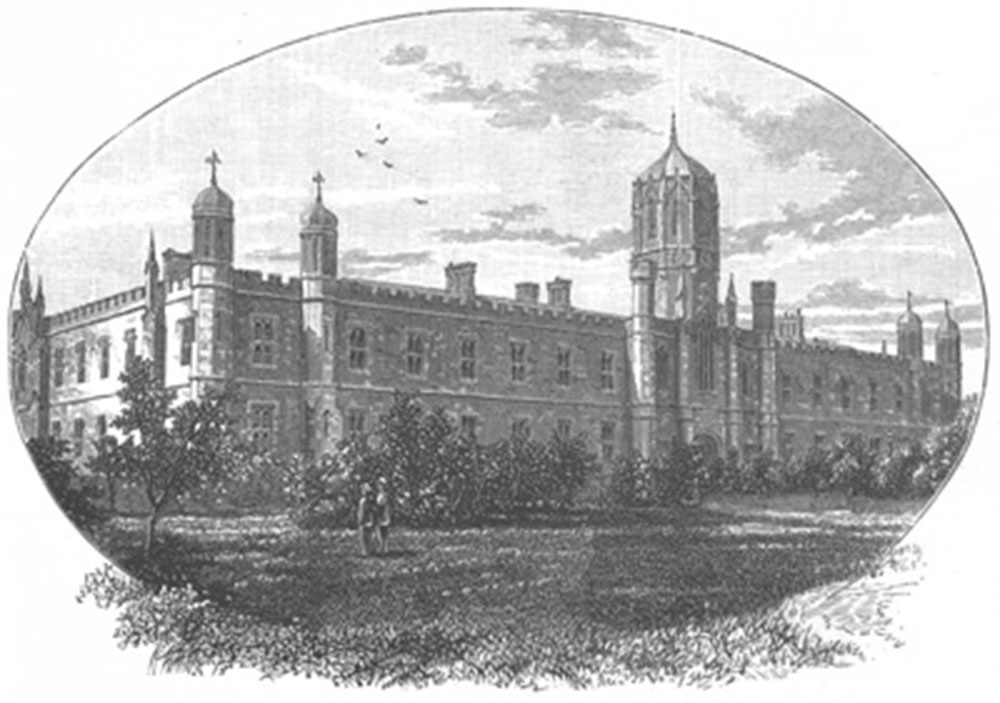Galway - Irish Pictures (1888)
From Irish Pictures Drawn with Pen and Pencil (1888) by Richard Lovett
Chapter VII: Connemara … continued
« Previous Page | Start of Chapter | Book Contents | Next Page »
Passing first Mullingar, that Mecca of anglers, then Athlone, already described, and finally Athenry, with its ruined castle, ancient gateway, and, if seen on market day, picturesque throng of Galway peasants, the train steams into the spacious Galway terminus, adjoining which is the huge hotel built in the hope that Galway would become, what it doubtless ought to be, a great port for the American trade.
The curious man may ramble about Galway, and find much to interest him at every turn. The streets are for the most part narrow, winding and irregular. The houses form a strange jumble. Side by side with substantial buildings of the most approved nineteenth century type, stand houses which carry the observer back to the sixteenth century, and if in their courtyards he were to see a group of Philip the Second's Spaniards, he could hardly be surprised. There is the same strange variety in the faces to be seen. Here, if nowhere else, the supposed typical Irishman is to be met, in tall hat and knee-breeches, with the short up-turned nose, small forehead and receding chin. Here also in the crowd follow faces that recall one after another the Dane, the Saxon, the Spaniard and the Celt. Here more, perhaps, than in most popular centres in Ireland the mixed character of the Irish people becomes evident.
There are but few buildings in the town of any special merit; Eyre Square contains the best of the modern structures. Lynch's mansion in Abbeygate Street is a fine example of the kind of house the Spanish merchants lived in three centuries ago. St. Nicholas Church is well worth a visit; the requirements of modern education are met by the Queen's College, a fine Gothic building, which stands on the western bank of the River Corrib, in the northern suburbs.
The town possesses a very fine harbour, and around it centres much of the business. Into this harbour empties the Corrib, the outlet of the two great lakes, Lough Mask and Lough Corrib, a shallow, rocky, rushing stream, in which at certain seasons of the year the salmon are to be seen in such numbers that—to use the colloquial phrase—'you might walk across upon their backs.' The current is too rapid and the bed too shallow for navigation through the town, and the Eglinton Canal connects the harbour for traffic purposes with the upper part of the Corrib. Few rivers rival the Corrib in the abundance of salmon, and while every facility is afforded for legitimate sport, a good deal of poaching of the kind shown in the engraving on page 166 is there carried on, if report in this instance speaks truly.
« Previous Page | Start of Chapter | Book Contents | Next Page »

